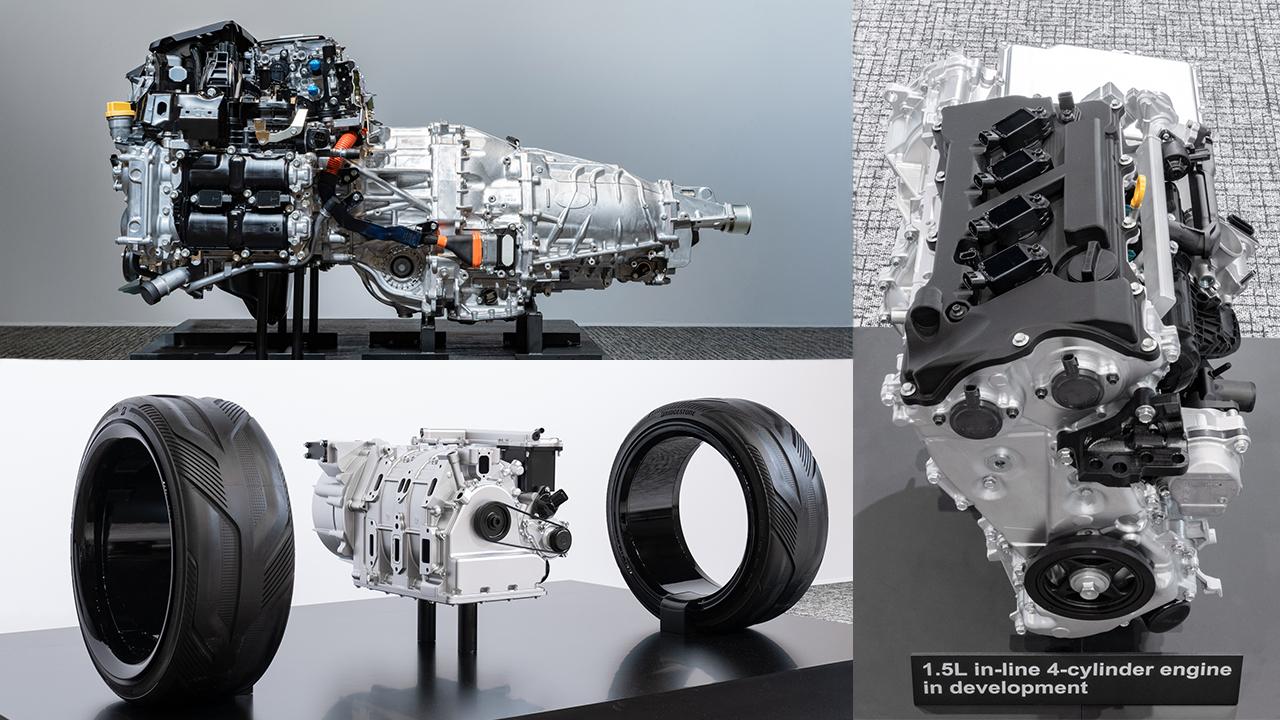
Subaru, Mazda, and Toyota's technology chiefs provided updates on their next-generation engine development. We take an in-depth look at these new technologies, which build on each company's unique offerings.
Mazda’s Rotary EV System Concept
“The rotary engine is Mazda’s unique internal combustion engine. However, its structural characteristics have repeatedly put us in difficult positions regarding environmental regulations. In the past it has even vanished from the market. But now we feel it is time to turn this uniqueness into an advantage.”
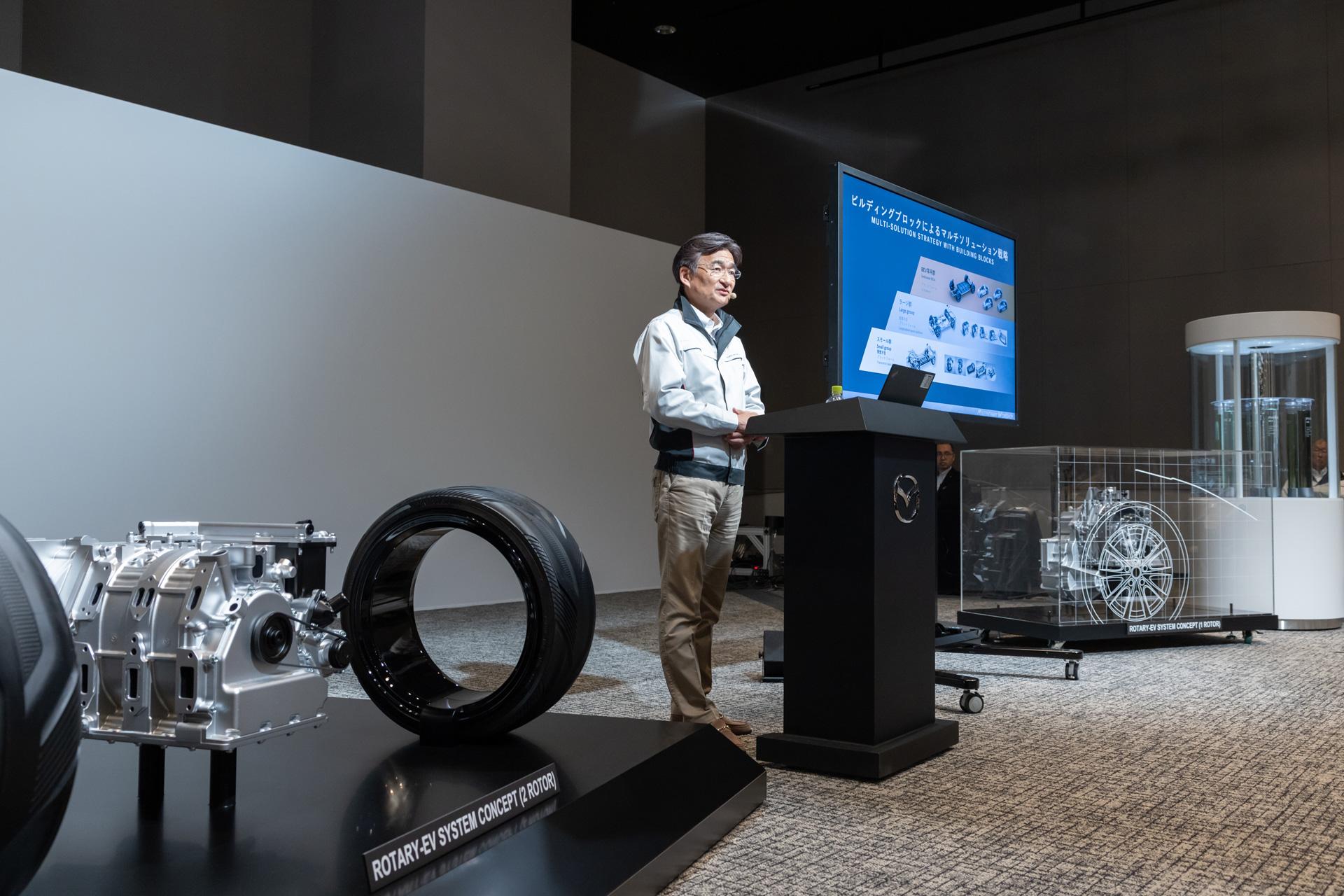
Mazda’s CTO Ichiro Hirose emphasized that the rotary engine, synonymous with the company, will play a growing role in creating a carbon-neutral society.
At the workshop, Mazda unveiled the single-rotor and twin-rotor Rotary EV System Concept, an electric powertrain that harnesses the strengths of rotary engines, which are compact and lightweight yet powerful.
The single-rotor model (transversely mounted*) is compact enough to fit straight into motor bays designed specifically for battery electric vehicles (BEVs), even when paired with electric drive units.
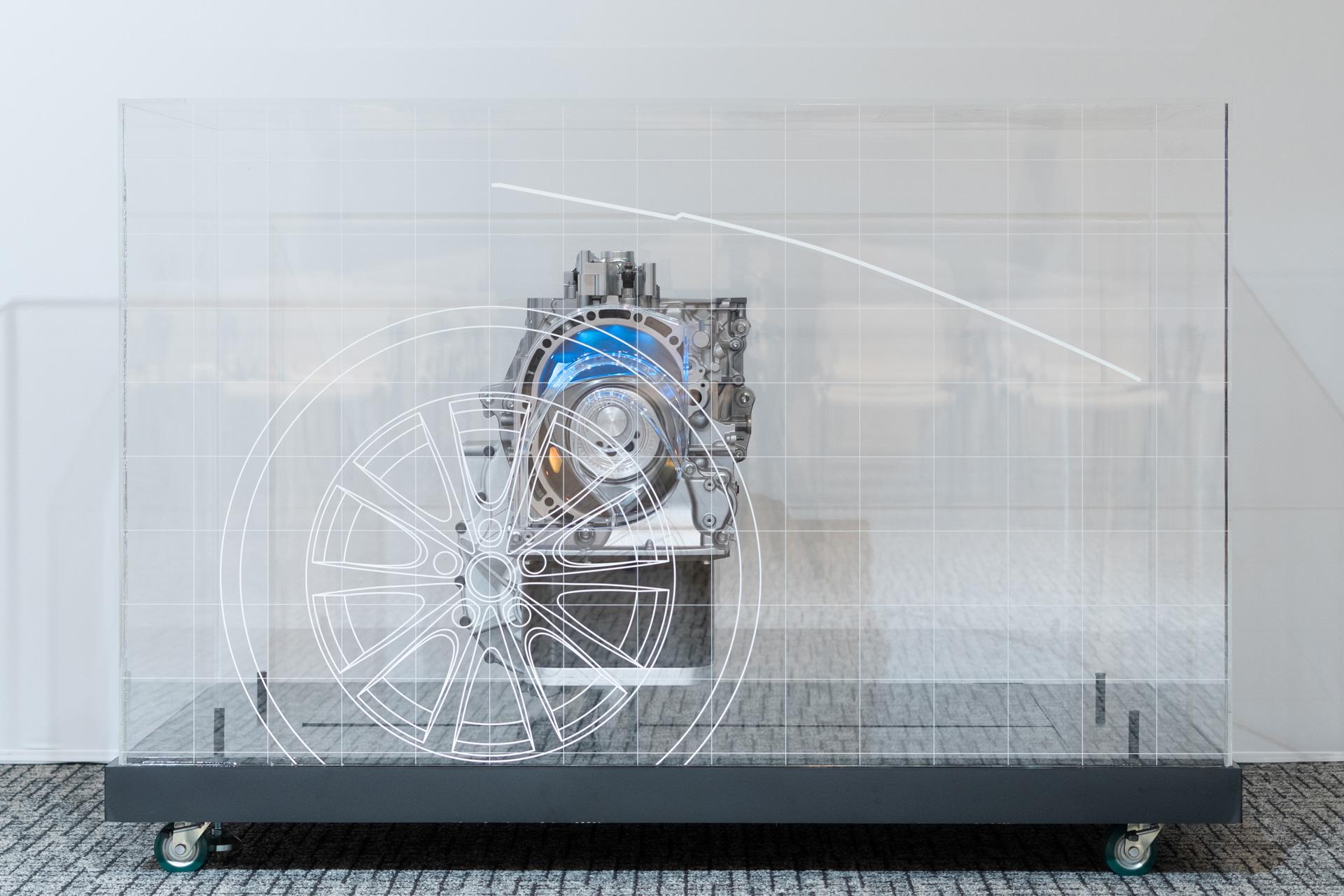
The twin-rotor model (longitudinally mounted) achieves a revolutionary low center of gravity, sitting below the tops of the tires on either side. “This allows for silhouettes that overturn the accepted norms of current engine cars,” says CTO Hirose proudly.
*Transverse & longitudinal mounting: Transverse engines are mounted such that the crankshaft axis is perpendicular to the direction of travel. Often found in front-wheel drive vehicles, they allow for larger interior spaces. In longitudinally mounted engines, the crankshaft sits parallel to the direction of travel. This arrangement makes it easier to transmit the engine’s power to the vehicle’s rear, making it common in rear-wheel drive cars.
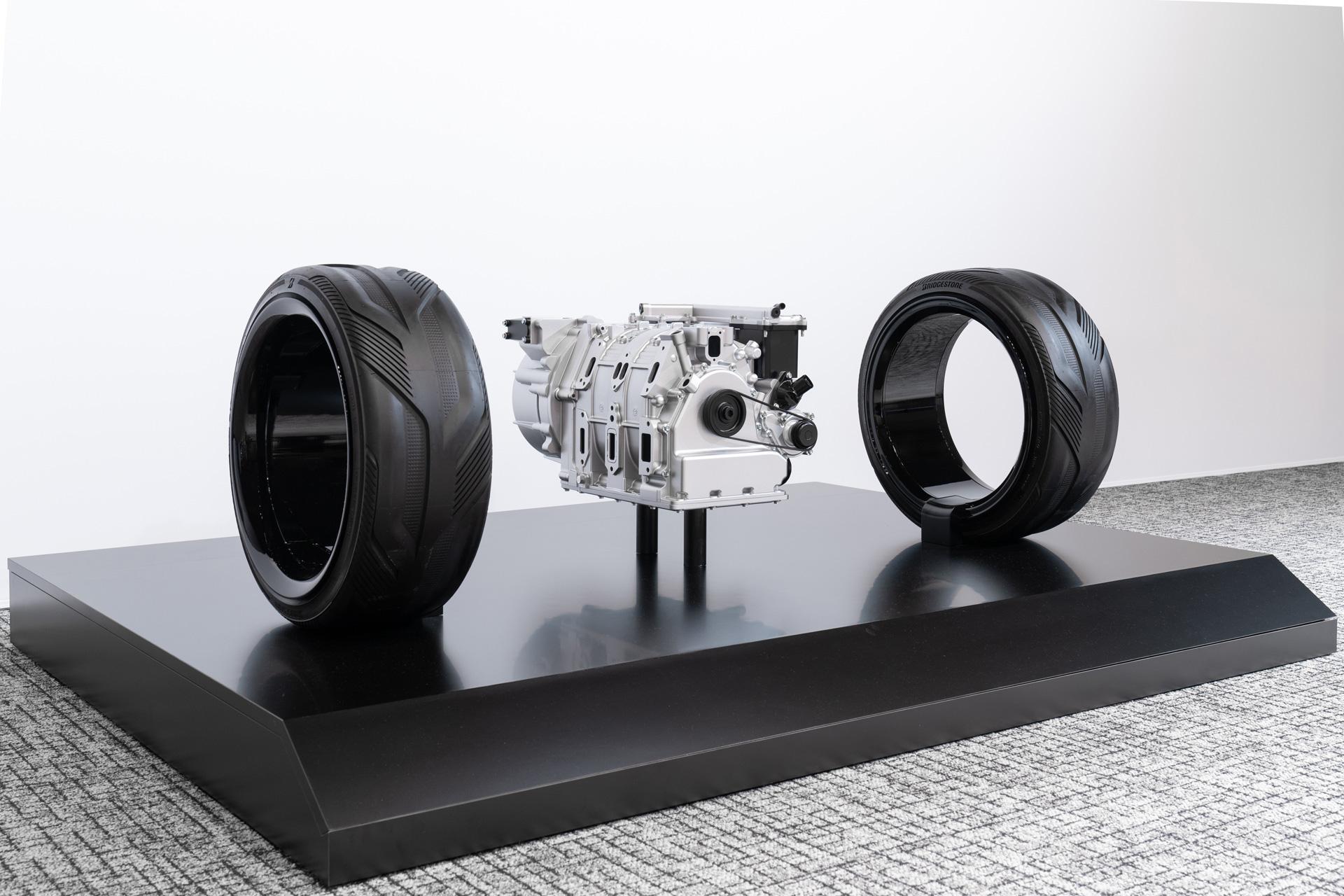
In his presentation, CTO Hirose also made time to explain the rotary engine’s compatibility with carbon-neutral fuels.
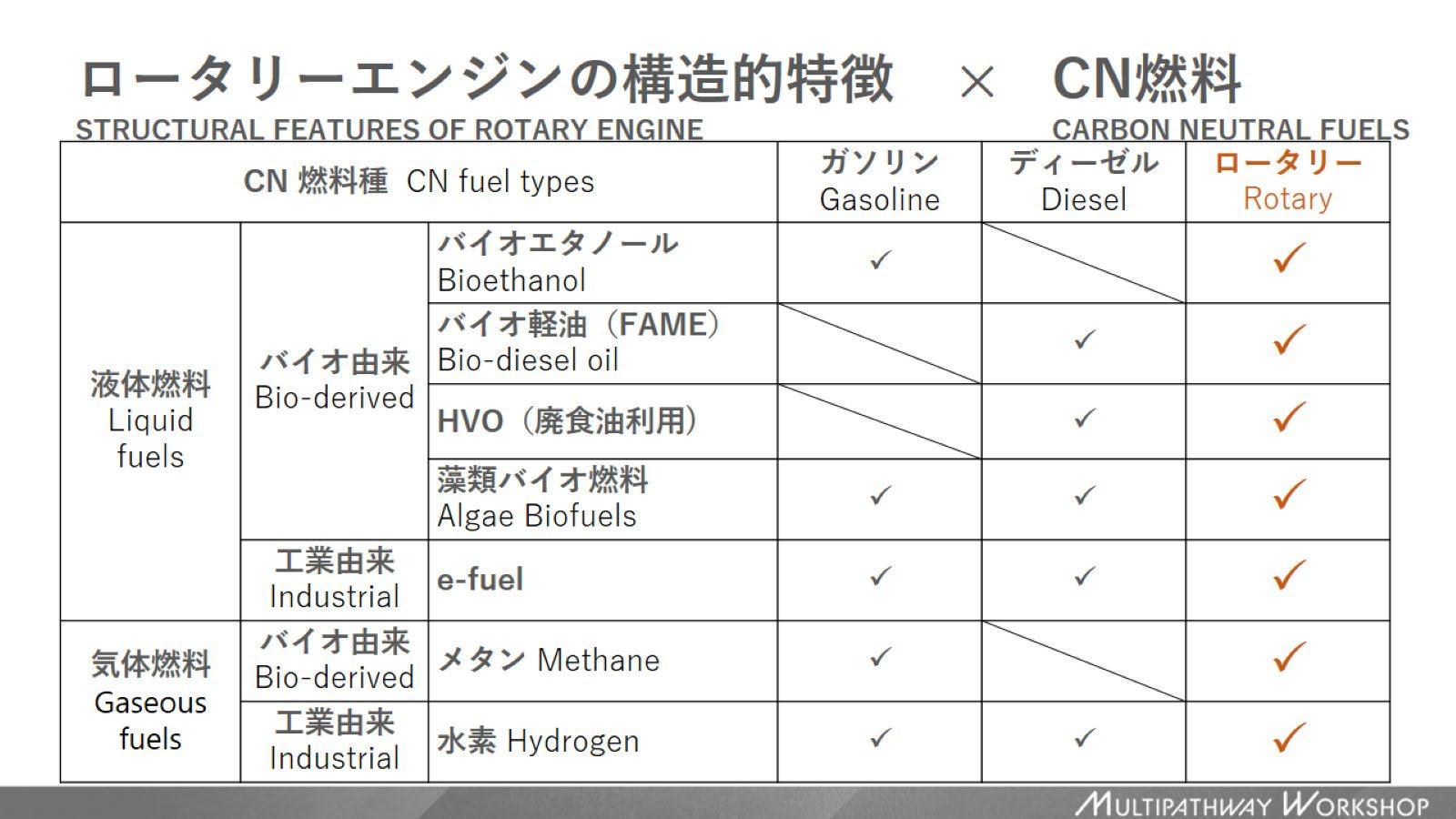
What we call “carbon-neutral fuels” actually cover a range of fuel types and characteristics. Some are highly combustible, others less so. Certain types act as lubricators, while alcohol-based fuels have poor lubrication.
Since rotary engines have distinctive revolutions that differ from other engines, their combustion is also unique.
A strong, unidirectional flow occurs in the combustion chamber, mixing the fuel with air in a way that enables even fuels with poor flammability to burn well.
In addition, the engine’s combustion and air intake chambers are separated, preventing the latter from becoming too hot and, therefore, stopping the unintended combustion of highly flammable fuels.
Rotary engines have no valves structurally, which also makes them less susceptible to the impact of a fuel’s lubricating properties.
These attributes underpin Mazda President Masahiro Moro’s comment during the press conference, describing rotary engines as “omnivores with respect to fuel.”
The biggest challenge is complying with the increasingly strict emissions regulations. Stringent legislations are in the pipeline in Western countries, including Europe’s “Euro 7” regulation, scheduled to come into force from 2028.
Mazda is working to overcome these hurdles by cleaning up exhaust emissions, including by selectively generating power in the engine’s optimal range to charge batteries and using electricity to warm up the engine immediately after startup when emissions are highest.
“By enticing customers with expanded product options beyond the silhouettes of conventional ICE vehicles, we can engage them in contributing to society and the environment through carbon neutrality. In tandem with the spread of BEVs, these engines can make decarbonization a collective effort,” says CTO Hirose.
Through new challenges in electrification and compatibility with carbon-neutral fuels, the rotary engine is once again being re-established as a viable option.

